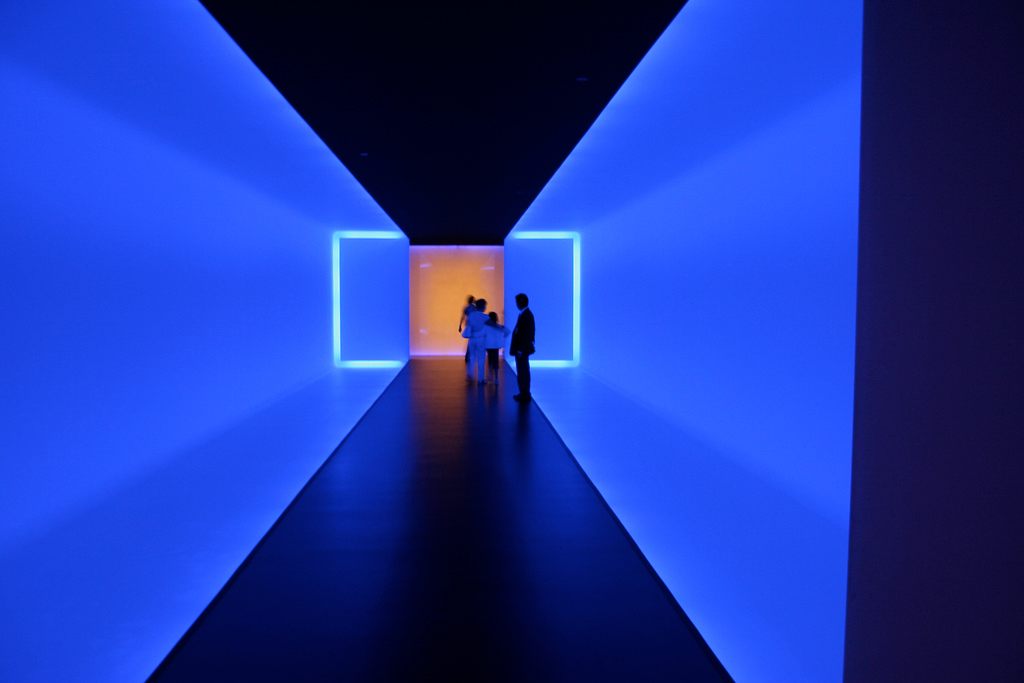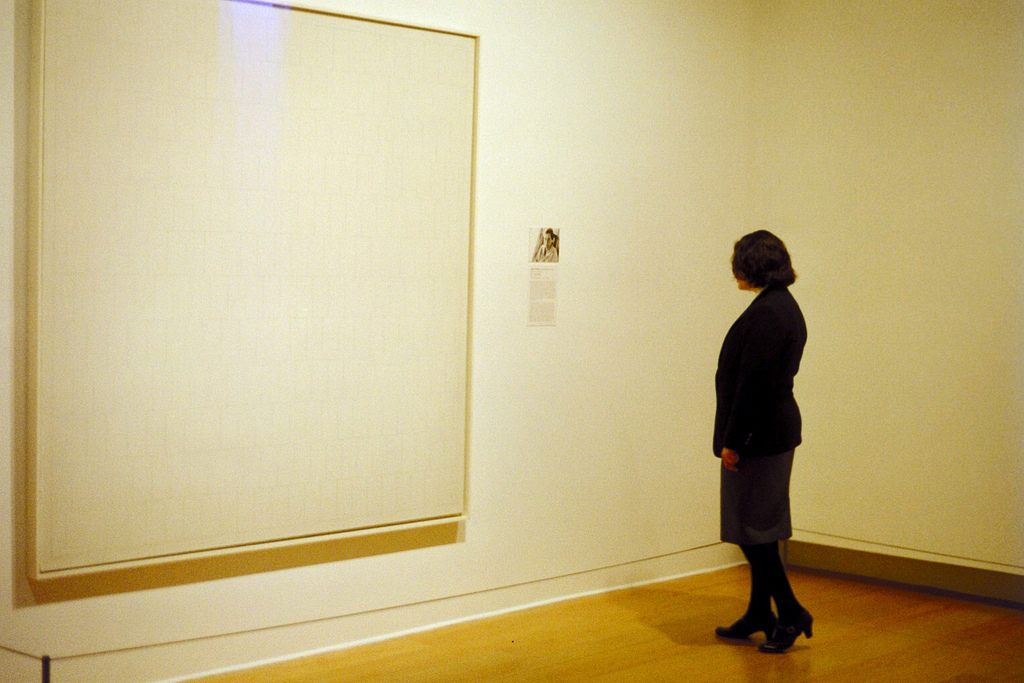Terror Threats Force Museums To Rethink The Role Of Gallery Guards

A guard is illuminated by James Turrell’s “The Light Inside” at the Museum of Fine Arts, Houston. (Photo: Ed Schipul/Flickr)
As public cultural centers become terrorist targets, museums are struggling to maintain their rarified atmosphere while also making sure their patrons feel safe. In the process, some are alienating some of their most storied employees: gallery guards, who fear new protocols will take the joy out of their jobs.
The past couple of years have seen the first big shift in museum security strategies since the late 1970s, says Steve Keller, an expert in the field for nearly 40 years. “With the active shooter concerns and the terrorism concerns, museums have suddenly become awakened to the fact that soft targets are now fair game,” says Keller.
But targets or not, these museums don’t want to lose their softness. “I get calls from museums where the director says, ‘We need to tighten up, but I don’t want to make it unwelcoming or make it look like there’s a problem,’” says Keller.

A guard examines her charge at the Norton Simon Museum in Pasadena. (Photo: Erica Zabowski/Flickr)
This balancing act requires various levels of decision-making, depending on the venue’s size and resources. Over the last week, Disney World, Disneyland, Universal Studios Orlando and Hollywood, and 11 SeaWorld locations all installed metal detectors—an option that Keller says would be “not very welcoming” in a more intimate environment. In the weeks after the Paris terror attacks, many European museums increased their security levels, implementing bag checks and funneling guests through smaller entrances, the Evening Standard reports.
Meanwhile, smaller museums search for solutions apposite to their resources. In response to concerns from parents, the Hands On Children’s Museum in Olympia, Washington recently implemented a sign-in policy for visitors for the first time, and has begun training its staff to recognize unusual behavior.
Often, the resulting changes hit gallery guards hardest. “I see a lot of museums that are very very concerned with having a 70-year-old lady standing at the front door, because she’s wonderful at public relations and not very good at stopping someone with a gun,” Keller says.

A wax figure of a security guard at the Nelson-Atkins Museum of Art in Kansas City. (Photo: David Reber/Flickr)
Guards at the Museum of Fine Arts (MFA) in Boston picketed last week in protest of upcoming adjustments to their contracts, including proposed changes in training that would shift their professional priorities. The guards, many of whom took the jobs in order to guide patrons, safeguard the galleries, and answer questions about art, are dismayed that these aspects of the job may be supplanted by morning drills and outdoor patrols. “They want us to not focus on the artwork and be able to fight things like active shooters,” Evan Henderson, president of the Museum Independent Security Union, told the Boston Globe. Karen Frascona, the museum’s PR director, responded by calling such training “industry standard.”
Some worry that stricter safety laws may literally damage collections—several director generals of British army museums have warned that their collections of historic weaponry could be “nearly destroyed” under proposed stricter European Union firearms directives. And the striking MFA guards fear that a reduced human presence in the galleries will endanger the collections, saying that new electronic security meant to take over while they’re at their new posts will not be enough to stop vandals. “If no one is there, artwork is damaged every day,” Henderson told Hyperallergic.

A guard blends into the experience at at the Tel Aviv Museum of Art. (Photo: Bezalel Ben-Chaim/Flickr)
Keller predicts improved security technology will reduce those concerns. And in the end, he says, the job of an art guard should involve more guarding and less art. “Many of the security guards who work in museums are really intelligent people who are doing it because they want to be around the art… they want to be able to talk about it,” says Keller. “It’s very hard for officers to understand that we shouldn’t be using them that way.” If security guards are hired and trained as true guards from the beginning, Keller says, these transitions will be less of an issue. “I think they’ll find over time that this is also enjoyable work,” he says. “Plus it’s a far cry less boring than just standing in a gallery.”


























Follow us on Twitter to get the latest on the world's hidden wonders.
Like us on Facebook to get the latest on the world's hidden wonders.
Follow us on Twitter Like us on Facebook